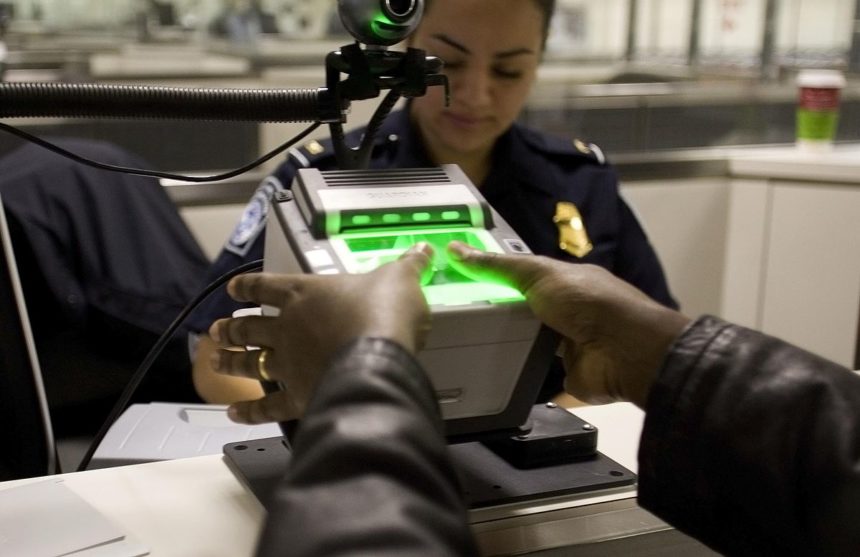
Customs and Border Protection (CBP) screens nearly one million people every day and secures and manages 328 ports of entry all over the country, including in remote areas.
Verifying the identity of every single person entering the United States is a vital step in halting human trafficking, drug trafficking, and other smuggling attempts at the border. In addition, security screening prevents criminals and terrorists from entering the country. Imposter detection crosscuts the entire Homeland Security Enterprise, as well as state, local, and tribal law enforcement and even front line soldiers in our military. All of these frontline operators execute this task as part of their respective missions and they must be able to accurately and efficiently verify identification of individuals to thwart imposters.
The Department of Homeland Security’s (DHS) Science and Technology Directorate (S&T) collaborated with CBP and the Federal Law Enforcement Training Center (FLETC) to develop tools that can help optimize imposter detection training. The most recent capability to transition is called Eye-dentify, which is an imposter detection training technology.
Building upon the success and leveraging the innovative technology in ScreenADAPT®, Eye- dentify tracks an officer/agent’s eye movements during training to determine where, how long and in what sequence a trainee is looking at an ID or a face. Before Eye-dentify, an instructor could have no way of knowing where a trainee was looking or if they are following the procedures being taught. Eye-dentify makes previously unobservable performance now observable. “Imposter-detection training is vital to accomplishing our mission,” said Luis Berenguer, Supervisory Course Developer/Instructor, Customs and Border Protection Officer (CBPO) Basic Training. “With new and innovative methods, tools, and technologies, we improve our ability to provide quality instruction to trainees. DHS S&T is assisting CBP in providing that quality instruction.”
Current training for imposter detection primarily consists of PowerPoint presentations and using training booklets coupled with classroom instruction. However, current training does not provide trainers or trainees with any feedback on their visual search patterns and whether those patterns conform to the procedures that are being taught. By tracking eye movements during training, Eye-dentify allows instructor to provide immediate feedback on performance.
“Eye-tracking technology has the ability to improve the visual search pattern in ways we have never been able to attain with traditional methods,” said Michael Shekot, Branch Chief, CBPO Basic Training. “We now have the ability to see how someone is performing their inspection and offer feedback that addresses the root cause of errors or inefficiencies.”
DHS S&T, FLETC and CBP identified the need for training that provided more deliberate practice and enhanced feedback on trainee performance. In response to that need, DHS S&T, FLETC, and CBP collaborated on the development of the new Eye‑dentify software training capability. Eye-dentify is now being used by CBP to train the task of searching facial features to spot imposters. Training like Eye-dentify will soon be extended into other tasks as well (e.g., searching for signs of fake or altered IDs/credentials, as well as searching video for pre-assault indicators/suspicious behavior detection). Eye‑dentify is a component to ScreenADAPT®, a visual search training platform collaboratively developed by DHS S&T and the Transportation Security Administration (TSA).
“We have had tremendous positive feedback from stakeholders who have collaborated with us and seen the type of performance benefits that can be gained from leveraging the capabilities of eye-tracking technology,” said Darren Wilson, Program Manager, S&T First Responders Group. “We want to continue to engage even more stakeholders across the Homeland Security Enterprise and get the technology to our font-line agents and officers that will benefit the most from advanced, innovative and adaptive training.”
“The training we conduct for imposter detection does not include the ability to collect the objective, immediate feedback on trainee performance. We need that feedback to address deficiencies in the limited class time we have with students,” said Shekot. “Eye‑dentify, allows us to maximize the effectiveness of our time with each student.”
When using Eye‑dentify, trainees are given immediate feedback. This feedback includes if their decision was correct, but more importantly how the image/face was scanned. Officers can then review their performance and “identify” the facial features they did or did not sufficiently examine. Trainers and trainees can review the accuracy and eye-tracking data for individuals or an entire class.
CBP is currently using Eye‑dentify for imposter-detection training in their new-hire training classes conducted at FLETC. CBP is currently using eight Eye‑dentify systems in their FLETC classroom, and DHS S&T will transition another four systems in July of this year, bringing the total to 12 Eye‑dentify systems that have been integrated into CBP training. A training effectiveness evaluation across three new hire classes of CBP officers demonstrated a 15 percent improvement in imposter detection. Trainees using Eye-dentify were able to examine more image pairs in the same amount of time and detect more imposters, resulting in performance improvements in both efficiency and effectiveness.
“Document examination and identifying imposters are tasks that are being executed across CBP,” said Berenguer. “Using Eye‑dentify to hone a trainee’s visual search skills used to detect imposters has shown measurable improvement in our trainees’ performance.”

